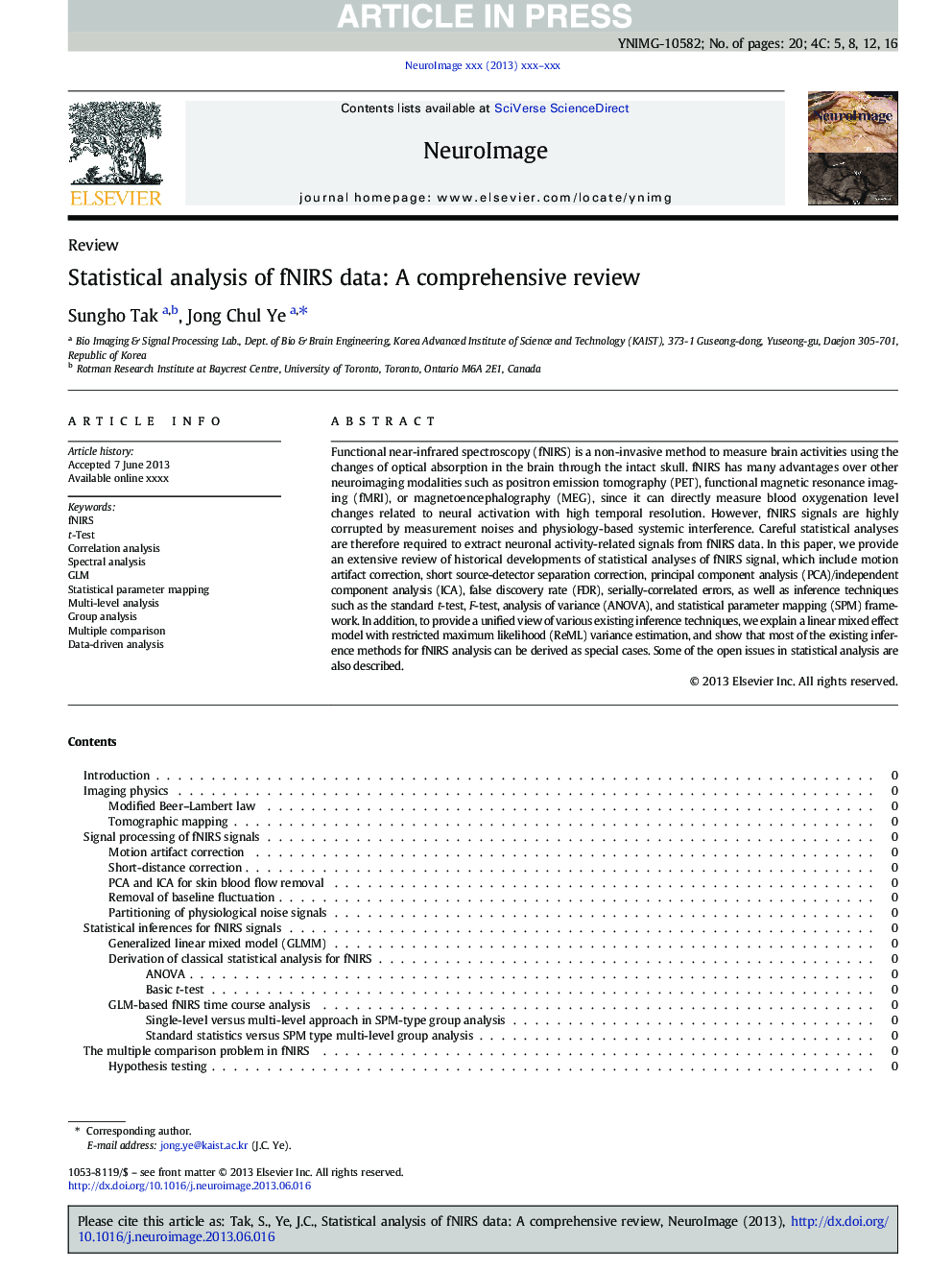| Article ID | Journal | Published Year | Pages | File Type |
|---|---|---|---|---|
| 6028760 | NeuroImage | 2014 | 20 Pages |
Abstract
Functional near-infrared spectroscopy (fNIRS) is a non-invasive method to measure brain activities using the changes of optical absorption in the brain through the intact skull. fNIRS has many advantages over other neuroimaging modalities such as positron emission tomography (PET), functional magnetic resonance imaging (fMRI), or magnetoencephalography (MEG), since it can directly measure blood oxygenation level changes related to neural activation with high temporal resolution. However, fNIRS signals are highly corrupted by measurement noises and physiology-based systemic interference. Careful statistical analyses are therefore required to extract neuronal activity-related signals from fNIRS data. In this paper, we provide an extensive review of historical developments of statistical analyses of fNIRS signal, which include motion artifact correction, short source-detector separation correction, principal component analysis (PCA)/independent component analysis (ICA), false discovery rate (FDR), serially-correlated errors, as well as inference techniques such as the standard t-test, F-test, analysis of variance (ANOVA), and statistical parameter mapping (SPM) framework. In addition, to provide a unified view of various existing inference techniques, we explain a linear mixed effect model with restricted maximum likelihood (ReML) variance estimation, and show that most of the existing inference methods for fNIRS analysis can be derived as special cases. Some of the open issues in statistical analysis are also described.
Keywords
Related Topics
Life Sciences
Neuroscience
Cognitive Neuroscience
Authors
Sungho Tak, Jong Chul Ye,
